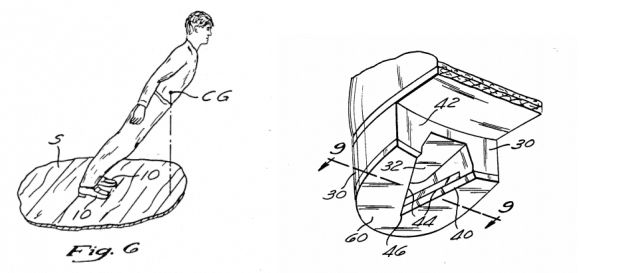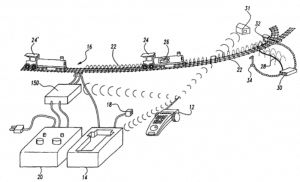When musicians think about intellectual property, patent protection is often overlooked as music and performance are more commonly associated with other intellectual property rights, such as copyright and trade mark protection. However, as musicians are creative by nature, patentable inventions may be created in the process of writing and performing music.
One famous example is the late great Eddie Van Halen, who in searching for a way to create new sounds from the electric guitar and master them, invented a support which could be used to, in the floral words of the patent he was granted: 'leav[e] both hands free to explore the musical instrument as never before.' Perhaps Eddie's creativity rubbed off on the patent attorney who drafted the patent - the person who prepared the patent's drawings certainly made sure to properly capture the support's intended use!

Patentable inventions don't just arise from writing music, however. They may also arise from planning new dance moves and killer performances. Michael Jackson (along with two of his costumers) was granted a patent in 1993 for a 'method and means for creating anti-gravity illusion' to allow a performer to 'lean forwardly beyond his center of gravity'. Fans of the King of Pop may immediately recognise this as his iconic dance move from the 'Smooth Criminal' music video.
If you've always wondered how he was able to lean so low, or perform the move live without visible wires or cables, his invention included a v-shaped guide in each heel of his boots as well as hidden bolts in the floor of the stage which a stage hand could raise once MJ was in place. By sliding the heels over these bolts, he was then firmly secured to the stage for the dance move, before he disconnected and the bolts moved back to their hidden position so that they didn't interfere with the next dance move.

Musicians are also often blessed with a discerning ear, and may want their music performed with 'studio quality sound' rather than the compressed files favoured by streaming services or MP3 players. In Neil Young's case, this led him to invent the PonoPlayerTM portable music player, the main selling point of which was that it played music in high-resolution. To protect his invention, Neil Young was granted a patent for 'Multiple resolution audio and video systems, methods of production, delivery and uses thereof'.
In fact, Neil Young has also proven that musicians need not limit themselves to the musical sphere and may come up with completely separate inventions. In addition to the PonoPlayerTM, Mr Young also has a number of patents relating to his other passion in life, model trains. Neil Young's model train inventions began when he wanted a way to share his hobby with his son, whose cerebral palsy left him unable to operate conventional model train remotes. Don't think for a moment that Mr Young doesn't bring his discerning ear to all his pursuits as one of the stated benefits of his 'Model train control system' is creating 'effects of engine and brake noise . to more realistically mimic a real train.'

In our next article, we will discuss what rights a patent provides, what is required for an invention to be patentable, and what to do if you think you have an invention.
This article forms part of DCC's Music and IP initiative.
The content of this article is intended to provide a general guide to the subject matter. Specialist advice should be sought about your specific circumstances.


